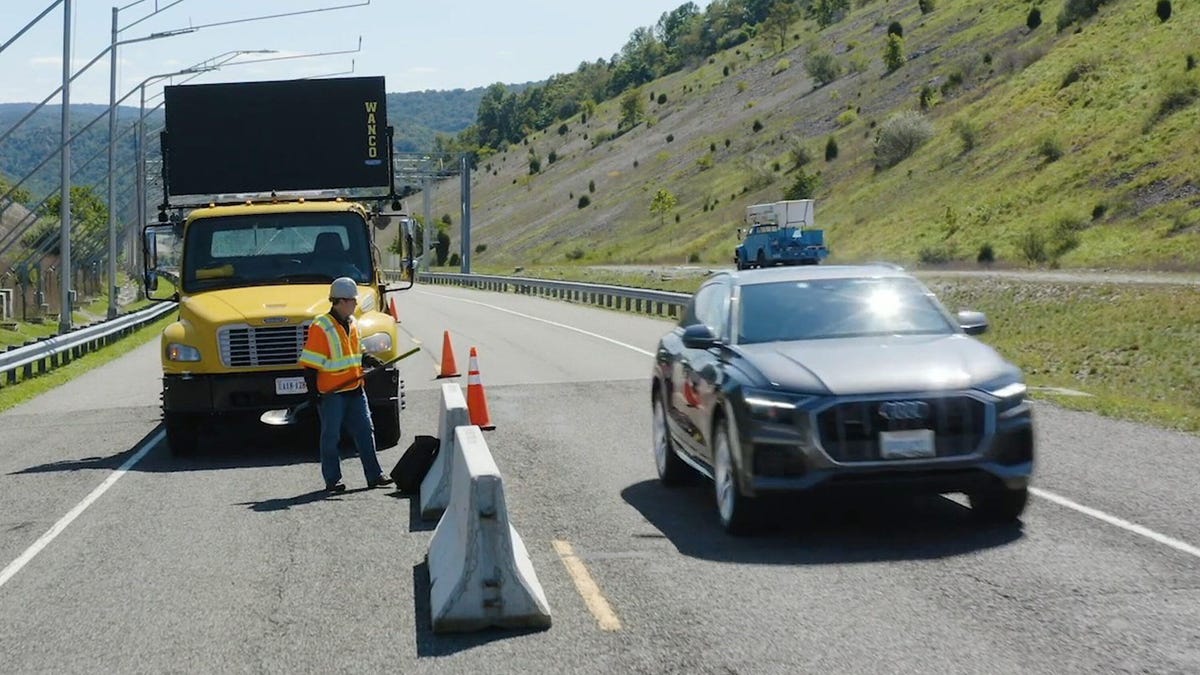Audi's cellular vehicle-to-everything communications tech will save road workers' lives
"C-V2X" communication is the future and Audi is pushing it forward.

New technology can warn road workers of oncoming traffic.
Audi on Tuesday announced that it's working to improve the safety of road workers in construction zones. The German luxury automaker's next-generation "C-V2X," or cellular vehicle-to-everything communications technology, could significantly reduce crashes and fatalities.
This new system will work in conjunction with existing Traffic Light Information and Green Light Optimized Speed Advisory features that Audi already offers. TLI currently works at around 15,000 intersections in about 35 cities in the US, advising drivers of how long a signal will remain red before changing. GLOSA can advise motorists to travel at a certain speed to avoid hitting red lights, saving frustration and fuel.
Many vehicles on the road today are already equipped with modems that enable them to connect to cellular networks, but what Audi's been developing here does not use this communications technology. Instead, it's working on a system that lets cars connect directly with other vehicles, infrastructure or even people (in the designated 5.9GHz spectrum), rather than sending data to the cloud and back. This change should result in faster, more accurate communications and it avoids clogging up limited cellular bandwidth. Beyond that, by directly connecting all these things, this sort of communication can work in areas with limited or even no cellular service.
Audi will roll C-V2X out after it's been tested and made legal.
But how can Audi's C-V2X technology save lives? If road workers wear special vests that can communicate with vehicles, they can be warned of oncoming traffic and avoid getting hit. This is a simple but potentially highly impactful development. On average in Virginia, for instance, there are more than seven crashes every day in work zones. On average, there's one work-zone fatality every 15 hours in the state (80% of which are drivers), so a good number of lives could be saved by implementing this technology. And in the future, this could also be added to buses, traffic lights, crosswalks, cyclists and even children's backpacks, further increasing its versatility.
Currently, C-V2X is being trialed and rolled out in Virginia on test roads, but later it will be implemented on highways for additional testing. Vehicle-to-everything communication is the future, and Audi's pushing to make it a reality. And when all this becomes fully legal, the automaker plans to fully deploy it.
Audi is working with several organizations to roll out the tech, including American Tower Corporation, Qualcomm, Commsignia, the Virginia Tech Transportation Institute and the Virginia Department of Transportation.

